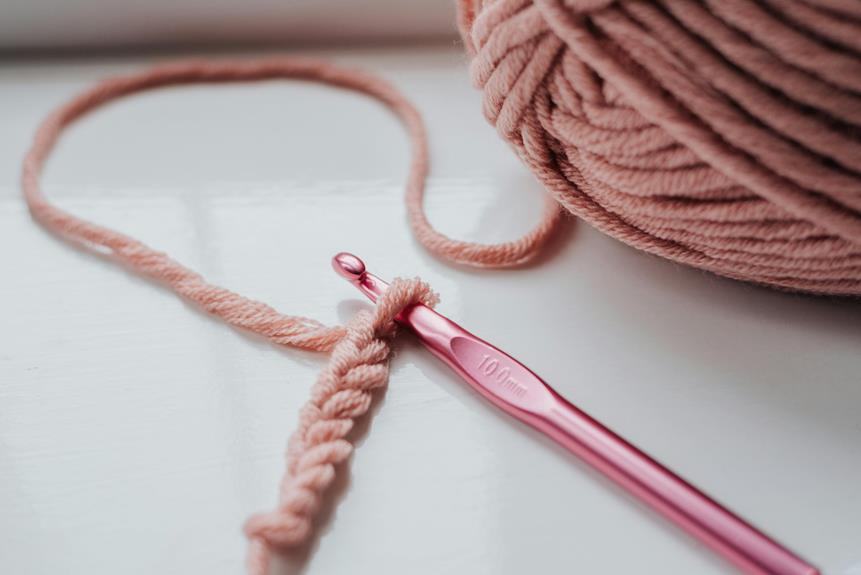When you consider Madras plaid fabric, you're looking at a vibrant cotton textile steeped in history. Originating from Madras—now Chennai, India—this fabric has become a hallmark of cultural craftsmanship and colonial trade. Its distinctive checkered patterns not only tell a story of tradition but also highlight its role in shaping Western fashion. Yet, the journey of Madras plaid is more intricate than it appears; it's intertwined with various cultural influences and practical uses. What other aspects of its history might surprise you?
Table of Contents
History of Madras Plaid
Madras plaid originated in India, where vibrant cotton fabric was woven in intricate patterns and bright colors for centuries. As you explore its history, you'll find that its roots trace back to the 18th century in the small town of Madras, known today as Chennai. Traders brought this eye-catching fabric to the Western world, primarily to meet the demands of European fashion.
As it gained popularity, you'll notice how Madras plaid became closely associated with British colonialism, often worn by the elite in the Caribbean and among the upper class in America. You might find it interesting that the fabric was originally handwoven using traditional techniques, emphasizing craftsmanship and artistry.
Characteristics of Madras Fabric
Known for its vibrant colors and unique patterns, Madras fabric features lightweight cotton that's perfect for warm-weather clothing.
You'll notice how this fabric breathes, making it a comfortable choice for hot days. The texture is soft and pliable, allowing ease of movement, which is essential whether you're dressing casually or aiming for a more polished look.
One of the standout characteristics is the bold, checkered patterns that are often handwoven, giving each piece a distinctive quality. You'll find that the colors can be incredibly bright or more muted, depending on the specific style. Madras fabric tends to fade beautifully over time, adding to its charm and character.
It's not just great for clothes; you'll often see it used for tablecloths, curtains, and even accessories. When you wear Madras, you're not just embracing a fabric; you're welcoming a piece of history and craftsmanship.
This fabric's versatility means it can easily transition from the beach to a backyard barbecue. So, keep an eye out for Madras prints in your wardrobe; they're a timeless addition that never goes out of style.
Cultural Significance in India
The vibrant colors and patterns of Madras fabric carry deep cultural significance in India, where it reflects a rich history intertwined with traditional craftsmanship and regional pride.
You'll find that each distinctive pattern often represents specific regions, showcasing local artistry and the unique stories of their communities. Traditionally, artisans have handwoven these fabrics, passing down techniques that highlight their heritage.
Madras fabric's use in clothing, particularly shirts and casual wear, symbolizes both informal elegance and celebration. It's popular during festivities, with families often dressing in vibrant Madras attire, reinforcing social bonds and cultural expression. As you wear or observe this fabric, you'll notice how it evokes a sense of identity—both personal and communal—making it a staple in many households.
Additionally, the fabric's historical ties to trade routes emphasize India's interconnectedness with various cultures. This blending has enriched the palette of Madras patterns over the years.
Ultimately, Madras fabric isn't just a textile; it's a testament to the enduring legacy of Indian craftsmanship, community, and the vibrant life that colors the cultural landscape of India.
Impact on Fashion Trends
Influencing designers worldwide, Madras plaid fabric has woven its way into contemporary fashion, bringing vibrant patterns and rich history to everyday wear. You'll find this lively fabric making statements in both casual and formal settings, showing off its versatility. From breezy summer dresses to tailored blazers, Madras plaid adds a pop of color that stands out.
In the realm of streetwear, Madras plaid has become a staple. You might see it featured in oversized shirts and accessories, providing a laid-back vibe. It complements various styles, making it easy to mix and match with solid pieces. Designers are also experimenting with different scales of the patterns, blending traditional roots with modern silhouettes.
You may have noticed how Madras plaid appears in seasonal collections, highlighting its timeless appeal. It reflects a connection to heritage while catering to the first-hand demands of the fashion-forward. As you curate your wardrobe, incorporating Madras plaid allows you to celebrate its legacy while staying on-trend.
This fabric not only elevates your look but also tells a story, bridging cultures and eras through its unique patterns and colors.
Care and Maintenance Tips
To keep your Madras plaid fabric looking vibrant and fresh, follow these essential care and maintenance tips.
Start by washing your fabric in cold water to prevent colors from fading. If you're dealing with a garment or home decor, always check the care label for specific instructions. It's best to use a mild detergent that's free from bleach to maintain the fabric's color integrity.
When it comes to drying, opt for air drying or low-heat tumble drying. High heat can damage the fibers and lead to shrinkage. If ironing is needed, turn the fabric inside out and use a low to medium heat setting to avoid scorching the vibrant patterns.
For stains, treat them promptly. Dab the stain with cold water using a clean cloth and a gentle stain remover before laundering. Avoid soaking the fabric for extended periods as this may lead to color bleeding.
Lastly, store your Madras plaid items in a cool, dry place, away from direct sunlight. This prevents fading and keeps your fabric in pristine condition for seasons to come.
Frequently Asked Questions
Is Madras Plaid Suitable for Outdoor Wear?
Yes, madras plaid's lightweight, breathable fabric makes it great for outdoor wear. It's comfortable in warm weather, and its vibrant patterns add a stylish touch to your outdoor outfits, whether you're hiking or enjoying a picnic.
Can Madras Fabric Shrink After Washing?
Yes, madras fabric can shrink after washing, especially if it's not pre-shrunk or washed in hot water. To avoid shrinking, wash it in cold water and air dry or tumble dry on low heat.
What Are the Best Color Combinations for Madras Plaid?
You'll love combining vibrant colors like blue and green or orange and pink in madras plaid. Mixing warm and cool tones creates a playful yet sophisticated look that's perfect for any casual or festive occasion.
Is Madras Plaid Fabric Sustainable or Eco-Friendly?
Madras plaid fabric varies in sustainability, depending on its production methods. You should check for certifications and consider brands prioritizing eco-friendly practices, as these choices can significantly impact the fabric's environmental footprint.
How Do You Identify Authentic Madras Fabric?
To identify authentic madras fabric, check for vibrant, faded colors, irregular patterns, and lightweight texture. Look for the handwoven feel, and ensure it's 100% cotton. Real madras has a distinctive charm that mass-produced fabrics lack.
- The Use of Nonwovens in Construction and Civil Engineering - July 11, 2025
- The Use of Nonwovens in Construction and Civil Engineering - July 11, 2025
- The Use of Nonwovens in Construction and Civil Engineering - July 11, 2025







